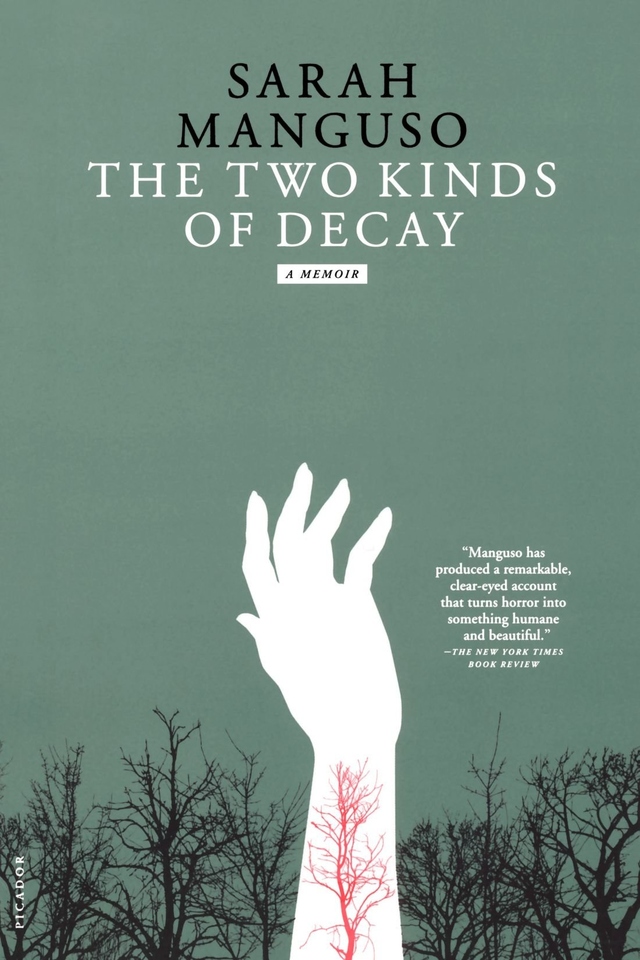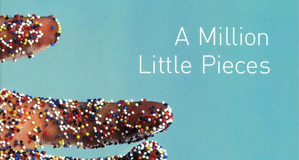Consumption: The Role of Eating in Rehabilitation in the Memoirs "A Million Little Pieces" and "Two Kinds of Decay"
By
2014, Vol. 6 No. 12 | pg. 1/3 | » AbstractThe relationship between the self and food intersects at the meal, and this vital connection represents—physiologically, psychologically, and socially—one of the most transformative of human acts. This essay seeks to discuss the depiction of food and the self in the memoirs of Sarah Manguso’s “The Two Kinds of Decay” and James Frey’s “A Million Little Pieces” in terms of rehabilitation and the recovery process. The impact of food on a person’s recovery can be reflected in their physical self-representations and in their social functioning, as wells as their general attitudes towards self-maintenance and the nature of disease. In observing the specific eating behaviors of theses memoirists, this essay will attempt to contextualize those experiences within the broader framework of contemporary cultural movements, such as the self-help movement and the industrialization of food. In conclusion, this essay will demonstrate the multiple ways in which food may indicate an individual’s overall wellness, both physical and psychological. The memoirs “A Million Little Pieces” by James Frey and “The Two Kinds of Decay” by Sarah Manguso draw the essential connection between the overall wellness of an individual and their eating behaviors. Illness and eating are connected in dramatic ways, and most apparently reflected in Frey and Manguso’s physical self-descriptions. For James Frey, a recovering alcoholic/crack addict, the collegial atmosphere of the cafeteria as well the meals themselves are tantamount to his consoling session in his recovery process. Sarah Manguso suffers from rapid states of nerve and bodily decay brought on by her rare autoimmune disease, is drastically limited in her ability to interact with the outside world, to be in any way self-dependent, and also, to eat. Manguso’s major health concern moves away from the typical issues of a young person, diet and exercise, to the mechanisms of the hospitalized world’s intravenous fluid replacement systems. In terms of the rehabilitation process, the role of eating behaviors serves to indicate the physical health of the an individual, plays an important social function, and also symbolizes the essential nourishment needed in order to be fully rehabilitated, a necessary component of self-maintenance.In the rehabilitation process, whether due to a mental illness such as addiction or as the result of an illness, these memoirs display eating behaviors as a solid indicator of a person’s overall wellness. Furthermore, a description of adverse eating behaviors—the sheer inability to eat, the chronic consumption of toxic substances, and in the case of Frey, the inability to retain food, all aim to address the extreme nature of the individual’s illness. The first paragraph of his memoir establishes James Frey’s broken state both figurative and literally. With a gruesome self-description, the reader is introduced to Frey as he comes-to aboard an airplane with no recognition of how he got there. Like the reader, Frey is similarly trying to place himself within his surroundings. Attempting to relocate himself, Frey, again like the reader, is trying to understand how he got to this current position. Perhaps more bizarre than Frey’s feat of boarding a plane with “no ticket, no bags, no clothes, no wallet,” (Frey 2003) is the description, which is in some detail, of the condition of his battered body: “My four teeth are gone, I have a hole in my cheek, my nose is broken and my eyes are swollen nearly shut.” (Frey 2003) Frey’s face is the physical outcome of someone falling flat on his or her face. A symbol of his having hit rock bottom so to speak; in reality, it is the consequence of Frey having fallen straight down a fire escape, which demonstrates the clear limits of his escapist behavior. His face is not the only disturbing aspect of his appearance as his clothes are covered in “a colorful mixture of spit, snot, urine, vomit and blood.” (Frey 2003) The basic functioning of Frey’s body has shut down, and he has ceased to care for himself, including how he presents himself to others. From this stark beginning point, we find that Frey is in very bad condition, at least physically, but soon it becomes clear that his physical aliments are the outgrowth of his mental illness, specifically his alcohol and crack additions. Living this lifestyle, Frey does nothing to maintain his body and he needs nothing, except his escapes—the drugs, his addictions. In fact, when Frey’s father first asks him whether he needs anything, Frey responds with, “I need to get out of here, Dad.” (Frey 2003) Frey is motivated by escapism, which is the most critical aspect of his drug identity, even more than the specific drugs themselves, which he uses to escape. But, what exactly does this escape entail? Where is it that Frey would like to escape to? What exactly is it he is escaping from? Frey struggles with all of these questions and so when his father asks him again, “do you need anything,” (Frey 2003) he replies with a specific escape plan: “A bottle of water and a couple bottles of wine and a pack of cigarettes.” (Frey 2003) The drugs and alcohol allow Frey an escape—an option seeming to opt out of life—providing an alternative lifestyle to a typical healthy one. It may appear that James Frey’s addiction has little connection to eating behaviors; however, addiction and food both are acts of consumption and often are motivated out of a desire to escape. Early into his rehabilitation process, Frey describes the effect of the drugs the nurses give him to help with his withdrawal symptoms. As to the drugs, Frey explains what he feels like on them: “My arms are no longer my arms, my legs are not legs, my chest is not my chest, my face is not my face, my teeth do not belong to me. My body is no longer my body.” (Frey 2003). The nurse gave Frey the drugs because this feeling of escaping his body is much more appealing than the wretched feelings of withdrawal he would otherwise have to face. This is the apparent benefit of drugs, as they help you escape from the painful feelings or consequences insofar as they numb you to reality. In his dreams, however, the drugs function in the opposite manner, when Frey finds himself surrounded by drugs there appears no escape; “I lean over and place my nose just above the shimmering surface of the gasoline and I stare into the face of chemical annihilation. This face is my friend, my enemy and my only option.” (46) (Frey 2003) The face is one of the most distinguishing physical features by which we identify ourselves. That Frey sees a face of chemical annihilation, which is all at once his friend, enemy, and only option, suggests that he recognizes that his addiction both informs his identity, while on the other hand neglects it. In an account the ecology of addiction in drug abuse treatment discourse, the crucial contrast between the ecology of recovery and the ecology of addiction, concerns how they identify themselves when occupying those two different roles: “People in treatment were, themselves, described as “working a program”…Conversely, the mentality of the active addict was constructed fundamentally in terms of self-abandon.” (Weinberg 2000) The identity conflict for the patient in the recovery process is primarily a matter of self-efficacy. A physical description of the self, though, includes more than a depiction of physical features. For Manguso, her body movement was a major concern because it so readily signaled her illness to others; “I was concerned I’d caught a strange illness, but I was more concerned that I looked drunk. I was staggering around, even to and from breakfast, and I felt people looking at me and thinking it might be time for an intervention.” (Manguso 2008) Here, Manguso articulates the problematic nature of considering addiction an illness, which Frey also mentions. That is, addiction, unlike disease, involves a component of self-control. Frey believes it will simply take a certain amount of will power for him to stop his addictive behavior, presumably thinking he’ll be able to cure himself of his so-called disease in its entirety. Manguso, however, knows that no amount of will power could aid or cure her disease. As Manguso continues to need hospitalization though, the distinction between addiction and disease turns out to become more complex. For Manguso, the disease ultimately leads her down a path of addiction, an obvious side effect of her new drug dependency. When she describes the first time she is given a tranquilizer, she writes, “I became addicted to them immediately and took one every night for weeks, and it wasn’t long before I started needing more of them than the nurse wanted to give me.” (Manguso 2008) Initially, the tranquilizer is given to Manguso as an escape from the pain caused by her disease. For both Frey and Manguso, their addiction functions mutually as an escape from the pain brought on by their disease, and paradoxically, the overwhelming expression of that disease. The recent increase in the popularity of memoir has been-well documented and is due to a variety of historical and cultural events, such as the wider array of people now able to publish accounts of their lives as well as the ubiquity of talk shows, an indication of contemporary culture’s affinity for the media confessional. (Gilmore 2001) connect the memoirs more directly to eating behaviors, there must be some acknowledgement of the self-help craze that stuck in the early 2000’s and from which AMLP profited directly, and which indirectly welcomed the memoirs concerning the process of rehabilitation. It also beckoned in a wave of that which Kathryn Linder refers to in her essay, “The Fat Memoir as Autopathography: Self-Representations of Embodied Fatness,” as fat memoirs. These memoirs might also be considered a rehabilitation memoir because “by representing their compulsions to eat in terms of getting a “fix,” the fat memoirists situate their ability to control their eating within a framework of addiction.” (Linder 2011) In fact, as Linder notes, “much of the Overeaters Anonymous literature is Alcoholics Anonymous literature with the words “food substituted for alcohol.” (Linder 2011) The depiction of addiction, even in the case of the fat memoirs, has the paradoxical quality of functioning as mutually the individual’s method of control while signifying the uncontrollable chaos that prevents them from a healthy life—ultimately, becoming the reason they seek out rehabilitation. For these overindulgers, driven by an endless desire or compulsory need and practice escapism through the consumption of drugs or food, addiction becomes more than a behavior. It becomes a way out completely, an escape from the self. Simultaneously, it also becomes the paramount aspect to their identity, serving as their key identifying feature, and the perspective from which they view and by which they define themselves. If we extended the familiar adage ‘you are what you eat’ to be the more late-capitalistically inclusive, ‘you are what you consume,’ then addicts would certainly be the group that it best describes.Continued on Next Page » Suggested Reading from Inquiries Journal
Inquiries Journal provides undergraduate and graduate students around the world a platform for the wide dissemination of academic work over a range of core disciplines. Representing the work of students from hundreds of institutions around the globe, Inquiries Journal's large database of academic articles is completely free. Learn more | Blog | Submit Latest in Literature |



















